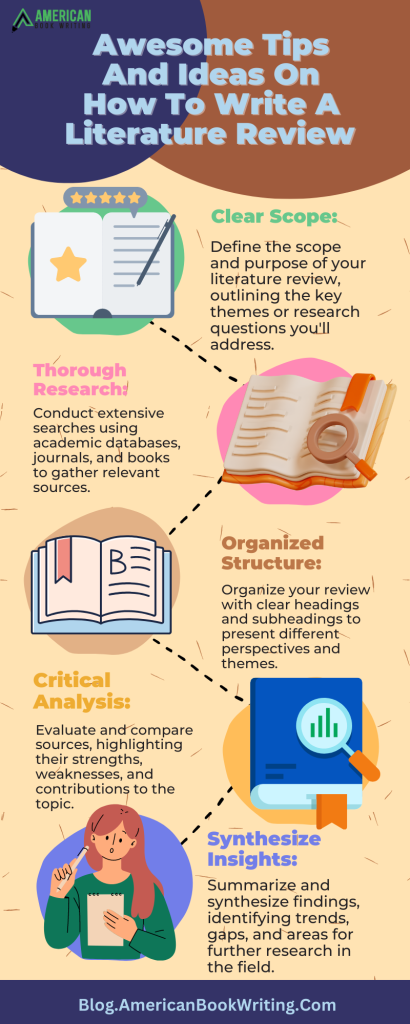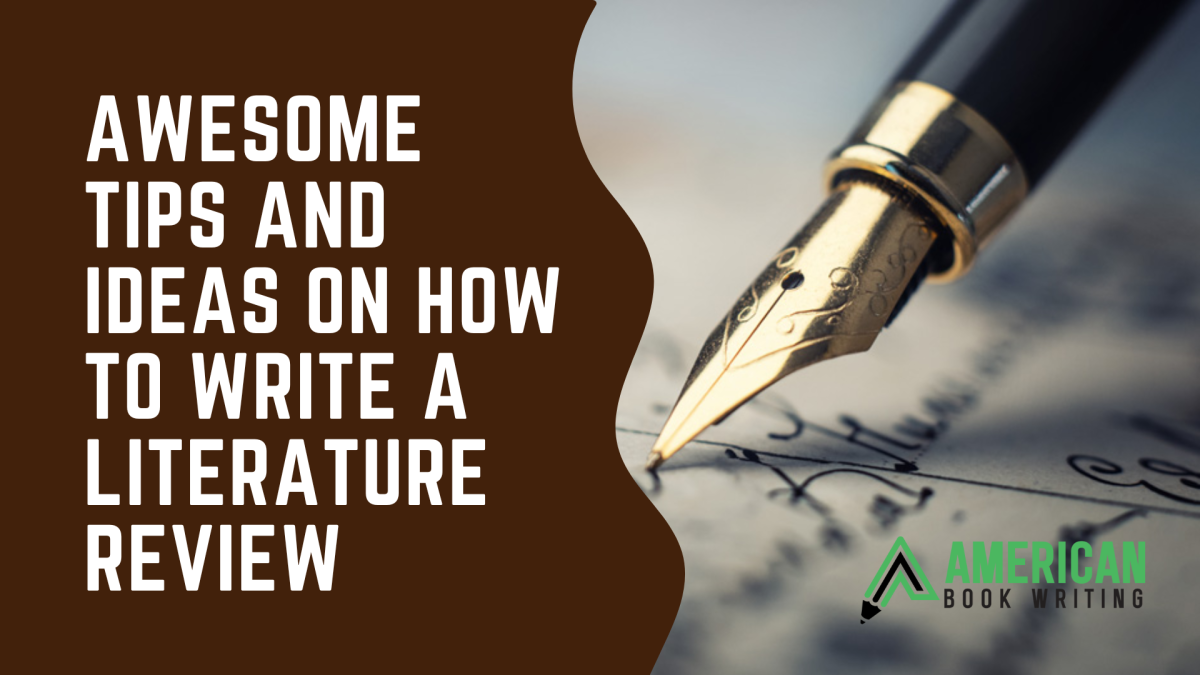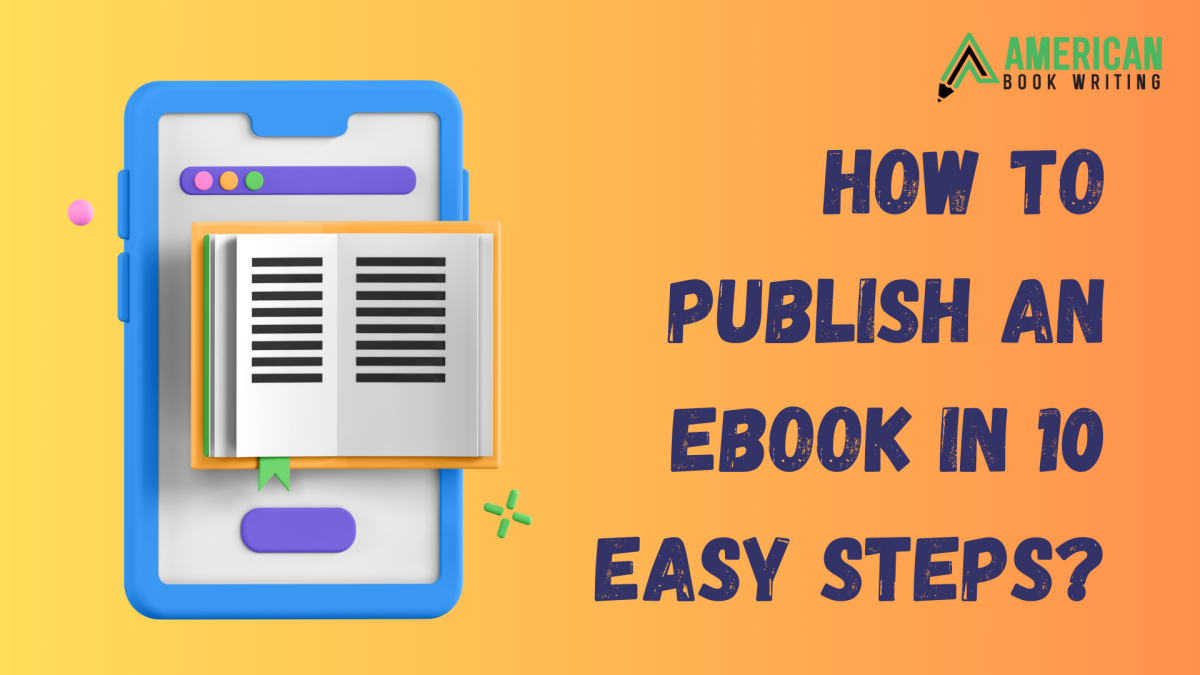review Write Literature
Press The Play Button On The Audio To Listen Complete Article!
The literature review surveys scholarly sources on a selected subject matter. It offers an outline of cutting-edge know-how, permitting you to perceive applicable theories, techniques, and gaps inside the existing research that you could later practice in your paper, thesis, or dissertation subject matter.
Why do you need a literature review?
When you write a thesis or research paper, you will likely conduct a literature review to situate your research within present knowledge. To understand how to address gaps in literature, consider referring to How to write a good story: A complete process.
You write a literature review:
- Demonstrate your familiarity with the subject and its scholarly context
- Develop a theoretical framework and methodology in your studies
- Position your work about other researchers and theorists
- Show how your studies address an opening or contribute to a debate
How To Write A Literature Review
Step 1 – Search for relevant literature
Before attempting to find literature, you want a truly described subject matter. If you’re writing the literature assessment phase of a research paper, you will look for literature associated with your research trouble and questions.
Make a listing of keywords.
Start using developing a list of keywords associated with your study query. For more on keyword utilization, see What step should you always incorporate into your content creation workflow?. Include the important principles or variables you’re curious about, and list any synonyms and related terms. You can add to this listing as you find new keywords inside your literature search system.
Use your key phrases to start trying to find sources. Some databases to search for journals and articles consist of:
- Your college’s library catalog
- Google Scholar
- JSTOR
- EBSCO
- Project Muse (humanities and social sciences)
- Medline (life sciences and biomedicine)
- EconLit (economics)
- Inspec (physics, engineering, and computer technology)
Step 2 – Evaluate And Choose Sources
You may be capable of studying virtually the entire written on your topic, so it will likely be important to evaluate which sources are most relevant to your study’s question.
For every book, ask yourself:
- What question or hassle is the writer addressing?
- What are the key principles, and the way are they defined?
- What are the important things theories, models, and techniques?
- Does the research use installed frameworks or take a modern technique?
- What are the effects and conclusions of the look?
- How does the booklet relate to other literature on the subject? Does it verify, add to, or mission-installed knowledge?
- What are the strengths and weaknesses of the studies?
Take notes and cite your sources.
As you read, you have to also start the writing process. To enhance your note-taking techniques, explore Writers notebook: What is it and how to use it. Take notes you could later include in the text when writing a literature review.
Maintaining song of your sources with citations is vital to avoid plagiarism. It is helpful to make an annotated bibliography, where you assemble complete citation facts and write a paragraph of precis and analysis for every source. This facilitates recollecting what you examine and saves time later within the technique.
Step 3 – Identify issues, debates, and gaps
To begin organizing and writing a literature review argument and structure, apprehend the connections and relationships between the assets you’ve examined. Based on your studies and notes, you can search for:
Trends and styles(in concept, technique, or outcomes)
Do sure tactics become extra or much less famous through the years?
Themes
what questions or concepts recur throughout the literature?
Gaps
Are there weaknesses that need to be addressed?
Debates, conflicts, and contradictions
where do assets disagree?
Pivotal publications
are there any studies that modified the route of the sector?
This step to writing a literature review will assist you in figuring out the shape of your literature review and (if relevant) display how your research will contribute to current know-how.
But there may be nonetheless a loss of sturdy studies on quite visual systems like Instagram and Snapchat—this is an opening that you may deal with in your studies.
Step 4 – Outline your literature review’s structure
There are various processes for organizing the body of a literature overview. For an example of thematic organization, review 10 best mystery books for kids that spark imagination. Depending on the period of your literature review, you can integrate numerous techniques (for instance, your usual structure might be thematic, but every theme is discussed chronologically).
Chronological
The most effective approach when you write a literature review is to trace the improvement of the subject over time. However, if you pick this approach, be cautious to avoid virtually listing and summarizing assets so as.
Try to investigate styles, turning points, and key debates that have formed the sector’s path. Give your interpretation of the way and why sure tendencies came about.
Thematic
Moreover, if you have located a few habitual crucial subject matters, you could prepare to write a literature review into subsections that deal with distinct factors of the topic.
For instance, in case you are reviewing literature approximately inequalities in migrant health effects, key themes might consist of healthcare coverage, language limitations, cultural attitudes, legal fame, and economic get entry.
Methodological
If you draw your resources from unique disciplines or fields that use loads of study techniques, you might need to evaluate the results and conclusions that emerge from extraordinary processes.
Theoretical
A literature evaluation is frequently the inspiration for a theoretical framework. You can write a literature review to discuss various theories, models, and definitions of key standards.
Step five – Write a literature review
Like other educational textual content, your literature evaluation has to have a creation, a chief frame, and a conclusion. What you include in every relies upon the objective of your literature evaluation.
Introduction
The advent has to write a literature review focus and motive. If you write a literature review as part of your dissertation or thesis, reiterate your significant trouble or research query and provide a short precis of the scholarly context.
You can highlight the timeliness of the topic (“much recent research has focused on the hassle of x”) or highlight an opening within the literature (“at the same time as there have been plenty studies on x, few researchers have taken y into consideration”).
Body
Depending on the period of your literature evaluation, you would possibly need to divide the body into subsections. You can use a subheading for every subject matter, period, or methodological technique.
As you write, you can follow these suggestions:
- Summarize and synthesize: give a top-level view of the primary points of every supply and integrate them right into a coherent, complete
- Analyze and interpret: don’t simply paraphrase other researchers—add your interpretations where feasible, discussing the significance of findings in the literature.
- Critically evaluate: point out the strengths and weaknesses of your sources.
- Write in nicely-structured paragraphs: use transition words and subject matter sentences to attract connections, comparisons, and contrasts.
FAQS
What is a literature review, and why is it so important?
A literature review summarizes all the academic works on a certain topic. It gives a quick overview of our current knowledge so readers can understand related theories, methods, and research gaps. It’s important to show how your study fits in with what’s already known, how well you know the subject, and how your work adds to or challenges current debates in the field. For more detailed insights, read How to write a children’s book and get it published.
Where do I start when writing a literature review?
Start by having a clear topic or question in mind. Use keywords from your study question to look for relevant literature. Use sites like Google Scholar, JSTOR, and the library catalog at your school. Once you’ve found possible sources, you should consider their usefulness, reliability, and importance to the field.
How should I put my literature review together?
Your literature review should have a beginning, a main part, and an end. The opening tells the reader what the paper is about, and the main body can be set up by theme, time, method, or theory. Make sure you summarise, synthesize, analyze, and explain what your sources say. In conclusion, you should focus on the most important results and what they mean in the bigger picture.
How do you find problems, debates, and gaps in the literature?
Look for recurring themes, patterns in research methods or results, gaps or weaknesses in the current research, areas of disagreement or debate, and key publications that have changed the direction of the field. You can take help from book publishers in this matter.
How can I make sure that I write a literature review that is good and reliable?
Make sure your sources are reliable by looking at their relevance, study methods, results, and contributions to the field. Summarise and synthesize the main points of each source, add your interpretations, and critically assess their strengths and weaknesses. Use transition words to ensure your writing flows well, and read it over carefully before sending it in. You might want to hire a skilled proofreader if you’re unsure about your language skills. You can find helpful structure tips in How to outline your novel: Ten simple steps guide.

Conclusion
In quick, literature opinions assist us in apprehending what’s already known about a subject. They provide a quick precis of beyond research. When you write one, you are displaying you recognize the topic properly. It’s like reporting on what experts have already stated.
There are steps to comply with: find books and articles, decide which are true, see what is missing or debated, plan how you will write, then write it. It’s critical to reveal how your work suits what’s regarded. Following those steps facilitates making your assessment clean and beneficial. Remember, the intention is to make it clean for readers to apprehend.




